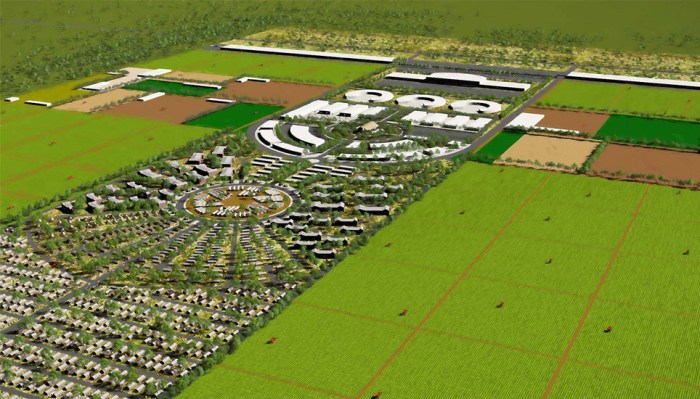Pros and cons of westward expansion – The westward expansion of the United States, a period marked by both progress and conflict, left a lasting impact on the nation’s history. From the motivations and goals that drove this expansion to the economic, social, and environmental consequences it entailed, this essay delves into the complex narrative of westward expansion, exploring its multifaceted legacy.
This historical odyssey began with the desire for land, resources, and new opportunities, but it also brought challenges and tensions. Settlers faced economic hardships, Native American tribes were displaced, and the environment suffered the consequences of rapid development. Yet, westward expansion also played a pivotal role in shaping American identity, fostering a sense of national unity and shaping the political landscape of the country.
Historical Context

Westward expansion in the United States was a period of territorial expansion that began in the 17th century and lasted until the late 19th century. During this time, the United States expanded its territory from the original thirteen colonies on the Atlantic coast to the Pacific Ocean.
The expansion was driven by a number of factors, including the desire for land, resources, and economic opportunity.
Motivations and Goals
The motivations for westward expansion were complex and varied. Some people were motivated by the desire for land. The United States had a large amount of undeveloped land in the west, and many people saw this as an opportunity to acquire land for farming, ranching, or other purposes.
Others were motivated by the desire for resources. The west was rich in natural resources, such as timber, minerals, and furs. These resources could be used to support the growing economy of the United States.
Still others were motivated by the desire for economic opportunity. The west offered the potential for new jobs and new businesses. Many people saw westward expansion as a way to improve their economic prospects.
Economic Impacts

Westward expansion brought about significant economic transformations in the United States. The acquisition of vast territories provided access to abundant land and resources, fueling economic growth and shaping the nation’s economic landscape.
The expansion of agricultural lands was a major economic benefit. Fertile soils and ample rainfall in the Midwest and Great Plains regions made these areas ideal for farming. The establishment of homesteads and the introduction of new agricultural technologies led to increased crop production, contributing to the nation’s agricultural output and economic prosperity.
Transportation and Infrastructure Challenges
Despite the economic opportunities, westward expansion also presented challenges. The vast distances and rugged terrain posed obstacles to transportation and infrastructure development. Settlers faced difficulties in transporting goods and supplies to markets and connecting with established transportation networks.
The construction of railroads played a crucial role in overcoming these challenges. The transcontinental railroad, completed in 1869, linked the eastern and western United States, facilitating the movement of people and goods across the continent. However, the construction and maintenance of railroads required significant investment and labor, adding to the economic costs of westward expansion.
Social and Cultural Impacts

Westward expansion had profound social and cultural consequences for both Native Americans and European settlers. It also shaped the identity of the United States as a nation.
Impact on Native American Tribes
The arrival of settlers on Native American lands led to conflict and displacement. Native Americans were forced to give up their traditional way of life and move to reservations. This resulted in the loss of their culture, language, and traditions.
- Disease: European diseases such as smallpox and measles decimated Native American populations.
- Warfare: Settlers often engaged in violent conflicts with Native Americans over land and resources.
- Removal: Native Americans were forced to relocate to reservations, often far from their traditional homelands.
Social and Cultural Changes for Settlers
Westward expansion also brought about significant social and cultural changes for settlers. They encountered new environments and cultures, which led to the development of new customs and traditions.
- Frontier lifestyle: Settlers adopted a more rugged and independent lifestyle, relying on their own skills and resources.
- Cultural diversity: The influx of immigrants from different backgrounds contributed to the cultural diversity of the West.
- Religious revivalism: The frontier experience fostered a sense of religious revivalism and the growth of new religious movements.
Role in Shaping American Identity
Westward expansion played a key role in shaping the American identity. It reinforced the ideals of individualism, self-reliance, and Manifest Destiny, which became central to the American character.
- Myth of the frontier: The frontier became a symbol of opportunity and freedom, and its mythology shaped American values.
- Expansionist ideology: The belief in Manifest Destiny justified the expansion of the United States westward.
- National identity: Westward expansion helped to define the United States as a nation with a unique history and destiny.
Environmental Impacts: Pros And Cons Of Westward Expansion

Westward expansion brought about significant environmental consequences, primarily due to the large-scale deforestation and soil erosion that accompanied the movement of settlers into new territories.
Deforestation
The clearing of forests for agriculture, timber, and other purposes resulted in widespread deforestation. Trees were felled in vast numbers to make way for farms, towns, and railroads, leading to habitat loss for numerous plant and animal species. The removal of trees also disrupted the water cycle, causing changes in precipitation patterns and increasing the risk of droughts and floods.
Soil Erosion
The loss of vegetation cover due to deforestation and the introduction of intensive farming practices led to severe soil erosion. The removal of trees and other vegetation exposed the soil to wind and water, causing it to be washed away.
This resulted in the loss of topsoil, which is essential for agricultural productivity, and contributed to the formation of gullies and ravines.
Conservation Efforts
Recognizing the environmental consequences of westward expansion, efforts were made to preserve and protect the environment. In 1872, Yellowstone National Park was established as the first national park in the United States, setting a precedent for the conservation of natural areas.
The Forest Reserve Act of 1891 allowed the federal government to establish forest reserves, which later became national forests, to protect timber resources and watersheds.
Despite these conservation efforts, the environmental impacts of westward expansion continued to be felt for decades to come. The loss of forests and soil erosion had long-term consequences for the ecosystems and landscapes of the American West.
Political Impacts
Westward expansion had a profound impact on the political landscape of the United States. It led to the creation of new states and territories, the expansion of federal power, and the emergence of new political parties and ideologies.
One of the most significant political consequences of westward expansion was the creation of new states and territories. As settlers moved west, they established new communities and governments. These communities eventually petitioned Congress for statehood, and by the end of the 19th century, the United States had expanded from 13 original colonies to 48 states.
The expansion of federal power was another important political consequence of westward expansion. As the United States acquired new territories, the federal government assumed responsibility for governing them. This led to the creation of new federal agencies and the expansion of the federal bureaucracy.
Westward expansion also led to the emergence of new political parties and ideologies. The Whig Party, which supported westward expansion, was founded in the 1830s. The Republican Party, which also supported westward expansion, was founded in the 1850s. These parties competed with the Democratic Party, which was more cautious about westward expansion.
Political Conflicts and Tensions
Westward expansion also led to a number of political conflicts and tensions. These conflicts included:
- Conflicts between settlers and Native Americans over land and resources.
- Conflicts between the North and the South over the issue of slavery.
- Conflicts between the federal government and the states over the issue of federal power.
These conflicts eventually led to the American Civil War, which was fought from 1861 to 1865. The Civil War was a major turning point in American history, and it had a profound impact on the political landscape of the United States.
Territorial Expansion
Westward expansion involved the acquisition of vast territories by the United States. These acquisitions played a pivotal role in shaping the nation’s geographical, political, and economic landscape.
Timeline of Territorial Acquisitions, Pros and cons of westward expansion
The major territorial acquisitions made by the United States during westward expansion include:
- Louisiana Purchase (1803):Purchased from France, this acquisition doubled the size of the United States and extended its western border to the Rocky Mountains.
- Florida Purchase (1819):Purchased from Spain, this acquisition secured the United States’ control over the Florida peninsula.
- Oregon Country (1846):Acquired through negotiation with Great Britain, this acquisition extended the United States’ northwestern border to the Pacific Ocean.
- Mexican Cession (1848):Acquired as a result of the Mexican-American War, this acquisition added vast territories in the Southwest, including California and New Mexico.
- Gadsden Purchase (1853):Purchased from Mexico, this acquisition completed the United States’ southern border with Mexico.
- Alaska Purchase (1867):Purchased from Russia, this acquisition added the vast territory of Alaska to the United States.
Methods of Acquisition
The United States acquired these territories through various methods, including:
- Purchase:The Louisiana Purchase, Florida Purchase, and Gadsden Purchase were all acquired through direct purchase from other countries.
- Treaty:The Oregon Country was acquired through negotiation and treaty with Great Britain.
- War:The Mexican Cession was acquired as a result of the Mexican-American War.
- Exploration and Settlement:Alaska was acquired through exploration and settlement by American citizens.
Technological Advancements
Technological advancements played a pivotal role in facilitating westward expansion by providing settlers with tools and resources that enabled them to overcome the challenges of the frontier and establish new settlements.These advancements transformed the lives of settlers by making transportation, communication, and agriculture more efficient and productive.
For instance, the development of the railroad allowed settlers to travel long distances quickly and transport goods more easily, opening up vast new territories for settlement. Similarly, the invention of the telegraph enabled settlers to communicate with distant outposts and receive news from the outside world, which was crucial for maintaining connections and coordinating efforts.
Agricultural Innovations
In addition to transportation and communication, technological advancements also revolutionized agriculture, making it possible for settlers to cultivate crops and raise livestock in the unfamiliar and often harsh conditions of the frontier. The invention of the steel plow, for example, allowed settlers to break through tough prairie sod, enabling them to expand their farming operations into new areas.
Similarly, the development of windmills and irrigation systems allowed settlers to access water in arid regions, making it possible to establish farms in areas that were previously uninhabitable.
Legacy and Impact
Westward expansion left a lasting imprint on American society and culture. It shaped the nation’s identity, values, and institutions, and its legacy continues to be debated and contested.
Ongoing Debates and Controversies
The legacy of westward expansion is complex and multifaceted, with both positive and negative aspects. Supporters of westward expansion often emphasize the opportunities it created for economic growth, territorial expansion, and technological advancements. However, critics argue that it also led to the displacement and oppression of Native American tribes, environmental degradation, and the entrenchment of social and racial inequalities.The
ongoing debates and controversies surrounding westward expansion center on issues such as:
- The treatment of Native American tribes and the forced removal of indigenous peoples from their ancestral lands.
- The environmental impact of westward expansion, including the destruction of natural habitats and the extinction of species.
li>The social and economic disparities that emerged between the East and the West, and the ongoing challenges faced by rural and frontier communities.
FAQ Summary
What were the main motivations for westward expansion?
The primary motivations included the desire for land, resources, and economic opportunities, as well as a belief in Manifest Destiny, the idea that the United States was destined to expand across the continent.
What were the economic benefits of westward expansion?
Expansion led to increased access to land, resources, and markets, contributing to economic growth and prosperity. However, it also brought challenges such as transportation and infrastructure issues.
How did westward expansion impact Native American tribes?
Native American tribes were displaced from their traditional lands, leading to conflicts, loss of culture, and social disruption.